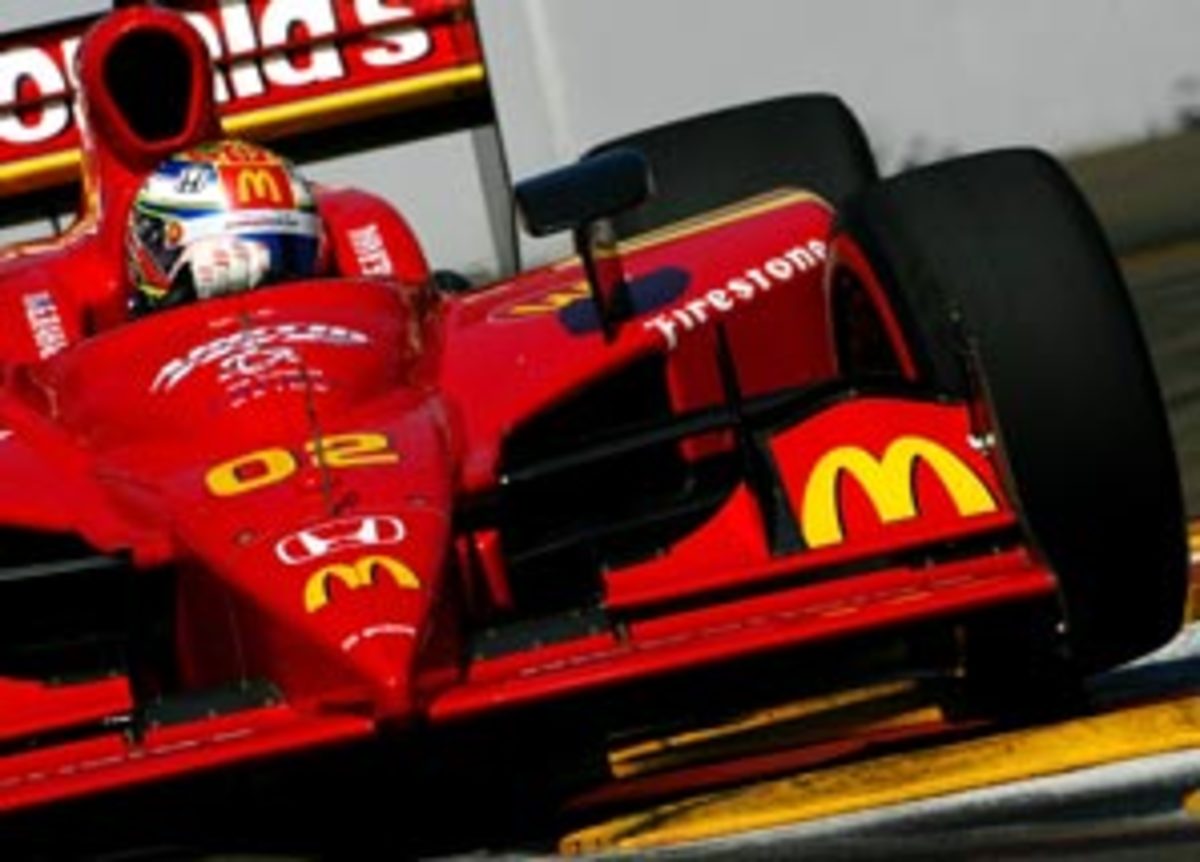Crown jewel of unification, Long Beach is ready for IndyCar
The biggest prize from IndyCar's unification with Champ Car makes its debut this weekend when the series hits the Toyota Grand Prix of Long Beach.
Long Beach immediately jumps to the front of the pack -- behind only the Indianapolis 500 -- in terms of importance. It is America's longest-running street-circuit event, a place where history has been made and tradition abounds. With a glamorous backdrop and shoreline featuring the Queen Mary, it almost always has mild, blue-skied, beautiful weather to showcase it all.
IndyCar has needed this event since Tony George started the Indy Racing League in 1996. Long Beach holds such stature that it kept CART's Champ Car event alive for years longer than it would have survived otherwise, giving CART a premier event for its sponsors, teams and fans.
Long Beach receives a boost, too. It hasn't been the same since 2002, when Penske and Ganassi Racing departed for IndyCar (followed by Andretti Green, Toyota and Honda in 2003, and Rahal and Fernandez Racing a year later). The fact that Long Beach survived such an exodus of star drivers, even maintaining title sponsor Toyota through a period of turmoil, points to the enduring quality of the event.
For the first time since 1995, the grid will feature the drivers, cars and teams that will race in the Indianapolis 500, returning Long Beach to a prominent position in American racing. Plus, Danica Patrick and Marco Andretti will sell plenty of tickets in their first appearance at the course.
Founder and promoter Chris Pook started Long Beach with a Formula 500 race in 1975, then brought in expensive Formula One. The event was in financial trouble until Mario Andretti drove his Lotus-Ford to victory in 1977. Andretti became the first American driver to win an F1 race on American soil.
"It was an American winning an international motor race on the streets of an American city," Pook said a decade ago. "This touched everybody. They thought about it, thought they should be here. The next year, ticket sales really boomed."
Even though crowds grew to 80,000 on race day and were well attended on Friday and Saturday, Long Beach wasn't making a healthy profit. F1 was too expensive. FOCA head Bernie Ecclestone wanted $2.2 million for the 1984 race, and Pook made a deal to bring in CART for $600,000.
There were many in the media and in racing who questioned the move. Long Beach had built its reputation around having the drivers in the World Championship. Would the fans accept the domestic CART series?
Only 56,000 showed up on race day, but when Andretti won in CART's debut race, it was re-established as a world-class event. The crowds returned to see the second generation take over, with Michael Andretti winning his first IndyCar race at Long Beach in 1986 and Al Unser Jr. winning six times between 1988 and 1995.
In putting together a schedule for the 2006 season, the IndyCar Series and the Auto Club Speedway in Fontana, Calif., couldn't agree on a date, and they parted company. From IndyCar's perspective, they were squeezed out by the second NASCAR Sprint Cup race awarded to Fontana in 2004. It forced IndyCar out of the spring and into the fall. The IndyCar race there in 2005 was run on Oct. 16. The series didn't want to run that late and go against the NFL on television.
IndyCar took some heat for not making a deal at any cost with Fontana. Southern California is a vital market for any racing series; it has a massive car-loving population and is rich with sponsorship opportunities, the primary reason NASCAR has kept two Sprint Cup races there despite not coming close to selling out either. But in retrospect, IndyCar made the right call in leaving Fontana, considering its scheduling options. It wouldn't have benefited the series to run in front of empty grandstands in the 100-degree summer heat or against the NFL in the heart of the pro football season.
Tony George's attempt to buy the Long Beach contract during CART's bankruptcy in early 2004 was foiled by a judge who ruled to accept the bid from the group formed by Gerry Forsythe, Kevin Kalkhoven and Paul Gentilozzi. They continued to operate the series under the Champ Car World Series banner until financial losses forced them to make a unification deal with George.
IndyCar gained teams and drivers from Champ Car last year, giving the series a respectable car count in the 20s, solid teams -- led by Newman/Haas/Lanigan -- and good drivers led by Justin Wilson and Graham Rahal. But the addition of Long Beach is the crown jewel of unification.






